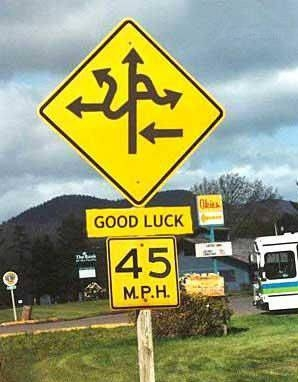Write a Terrific Novel (NaNo), Minimize Revisions, & Improve Odds of Finishing AND Publishing

Image via Flikr Creative Commons. Bansky’s “Peaceful Hearts Doctor” courtesy of Eva Blue.
We’ve already discussed the importance of fueling the muse BEFORE NaNo. But, fueling the muse, creativity, talent and all that jazz IS NOT enough. Finishing, while fantastic, is ALSO not enough. If we finish, yet have written something that can never exist off life-support? We’re back at Square One.
Though I am a fan of NaNo (National Novel Writing Month which is NOVEMBER) and Fast Draft, these tactics will work for writing ANY novel and minimize revisions.
AND…you don’t even have to be a plotter (Hint: I’m not. More of a Plotser–> Plotter + Pantser)
One of the major reasons many writers fail to complete the story is there isn’t a single CORE story problem in need of resolution. The story dies because it lacks a beating heart and a skeleton.
Stories with no hearts and skeletons are primordial adverb ooze and not good for much other than scaring small children.
A great trick one of my early writing mentors taught me was to go to the IMDB and look up log-lines of movies. Search for ones similar to the story you want to write and use it as a template. I will use an older and timelessly popular movie so I don’t spoil anything. Y’all have had 30 years to see the movie, so, yeah.
For instance, the log-line for Romancing the Stone is:
A romance writer sets off to Colombia to ransom her kidnapped sister, and soon finds herself in the middle of a dangerous adventure.
Okay, so here is “Kristen’s story”:
An OCD accountant sets off to Mexico to find her missing little brother and soon finds herself in the middle of a dangerous adventure.
It’s good enough. But, I am a perfectionist and not a fan of “good enough.” Let’s give more detail. When it comes to log-lines, I would have written Romancing the Stone THIS way with this formula:
Protagonist must do X (active goal) in order to stop X (antagonist) before super bad thing happens (ticking clock).
A fraidy-cat romance (INHERENT PERSONALITY TRAIT THAT ASSUMES ARC) author (PROTAGONIST) must travel to Columbia and partner with a shady smuggler to rescue her sister (ACTIVE GOAL) from jewel thieves (ANTAGONIST) before they feed her sister to alligators (SUPER BAD THING/ TICKING CLOCK/STAKES).
Using this formula and log-line, we can use it as a pattern for my made-up-this-morning story:
An OCD accountant (PROTAGONIST) must travel to Mexico City and partner with a former Green Beret ex-patriot to save her prodigal brother (ACTIVE GOAL) from a drug cartel (ANTAGONIST) before the cartel makes him an example to other dealers who lose shipments to Border Patrol (SUPER BAD THING/ TICKING CLOCK).
I just made up this log-line, but doesn’t it speak VOLUMES about the story? Why is the accountant OCD? Is she the older child who took care of a younger brother who was out of control? The more little brother got involved with bad people, the worse her OCD became? By using “prodigal brother” we get a sense that maybe he was trying to turn his life around and leave being a user and a dealer.
Ah, but “getting out” isn’t so easy.
By saying we have an “OCD accountant” we’ve picked the WORST person to send into the filthy bowels of cartel-land, let alone partner with a Green Beret. She’s going to want to control everything and maybe even use disinfecting wipes on all things in sight (including her Green Beret friend). We see how this could easily be a thriller, a romance, or even a comedy depending on how we write it.
With just this ONE sentence, we KNOW how the story ends and where. It ends in Mexico with brother alive and drug cartel either dead or in jail. So, we know where we are GOING. This makes plotting (even very basic Pantser-Plotting) simple. If our OCD accountant ends up in Kansas instead of Mexico, we know we took a wrong turn.

NaNo can feel a little like THIS…
There are now only so many options that lead to Mexico and finding little brother. There are only so many ways she can encounter an ex-pat Green Beret. Does he save her from being mugged? Does she HIRE him? Does he hit on her in the airport and she turns him down because his clothes are wrinkled and now she can’t get rid of him?
This log-line tells us VOLUMES about character arc, and, as the late Blake Snyder said, “Everybody arcs!”
Accountant is going to have to get over her OCD and become less controlling/neat-freakish and probably FORGIVE little brother, and maybe Green Beret needs to lighten up or even be more serious. If he’s an ex-pat, he could be running a sunglass kiosk on the beach and his motto is “Don’t worry, be happy” because he spent enough years being serious. His relaxed manner might drive her insane.
Formula for AWESOME conflict.
By looking at the IMDB, we can check out movies we loved and likely find there was a solid core story problem (code for “good log-line”). Most of the movies we hate? The ones where we are all like, “Great, two hours I can NEVER get back.” Odds are? Crappy log-line.
Worst….movie….ever (and I don’t give a rip what Sundance says). Melancholia. But I should have known from the log-line:
Two sisters find their already strained relationship challenged as a mysterious new planet threatens to collide with Earth.

Image from “Melancholia” but also MY face the ENTIRE TIME WATCHING THIS MOVIE.
Who is the protagonist? There ISN’T one (trust me on this). What is the active goal? Again, NOT THERE. “Finding a strained relationship challenged” is NOT AN ACTIVE GOAL.
It’s a sentence for misery. And, yes, I am bitter.
The movie is literally two sisters b!tch!ng at each other until everyone dies….and there was much rejoicing because I hated everyone in the movie and was happy they were all obliterated.
Yes, there is a super bad thing/ticking clock (a mysterious planet threatens to collide with the Earth) but there is NO WAY TO STOP IT. So the viewer is trapped with the Family from HELL until everyone dies.
The end.
ARRRRGGGGGGGHHHHHHHHHH!
We can learn a lot about what TO DO by studying what NOT TO DO. Yeah, yeah, Melancholia was pretty and had great cinematography and if you watch the movie on MUTE, it probably rocks. But for story? Not there. Trust me. This is three and a half hours of my life I will never get back AND $15 because I was stupid enough to BUY the movie and I can’t even regift it because there is no one I hate that much.
Sorry if I have offended any readers who LOVED Melancholia.
And for a movie that was NOT just supposed to be “art” here’s an older post about how Spiderman 2 (also known as THE MOVIE THAT WOULD NOT END) blew it because the log-line was LAME. Never underestimate the teaching capabilities of movies or books we hate. Why did we hate it? When did we lose interest? Why? Now, make sure WE don’t do that in OUR book ;) .
But, feed your muse a solid log-line to keep hold of and this will help you spot Bunny Trails of DOOM far easier. It will keep you on track and make that 50,000 words something solid that can be revised, because there will be the bones and beating heart of an actual story beneath all the superfluous description, poor dialogue or small rabbit trails all of us have to edit out later.
What are your thoughts? Does this formula help? What are some of the best/worst movies you have seen? Can you tell a stinker from the log-line? What catches your attention? What loses it? What movies are ones you watch over and over and buy a copy? WHY? Why THAT movie? For me? Minority Report, I Robot, and Monty Python’s–The Holy Grail. Generally because every time I see these movies I catch something NEW.
I LOVE hearing from you!
To prove it and show my love, for the month of OCTOBER, everyone who leaves a comment I will put your name in a hat. If you comment and link back to my blog on your blog, you get your name in the hat twice. What do you win? The unvarnished truth from yours truly. I will pick a winner once a month and it will be a critique of the first 20 pages of your novel, or your query letter, or your synopsis (5 pages or less).
For those who need help building a platform and keeping it SIMPLE, pick up a copy of my latest social media/branding book Rise of the Machines—Human Authors in a Digital World on AMAZON, iBooks, or Nook.





